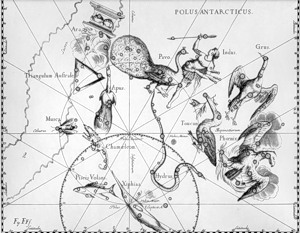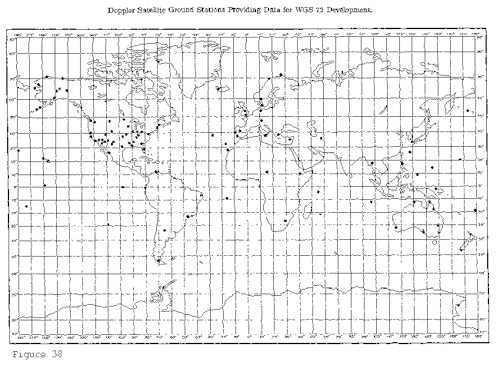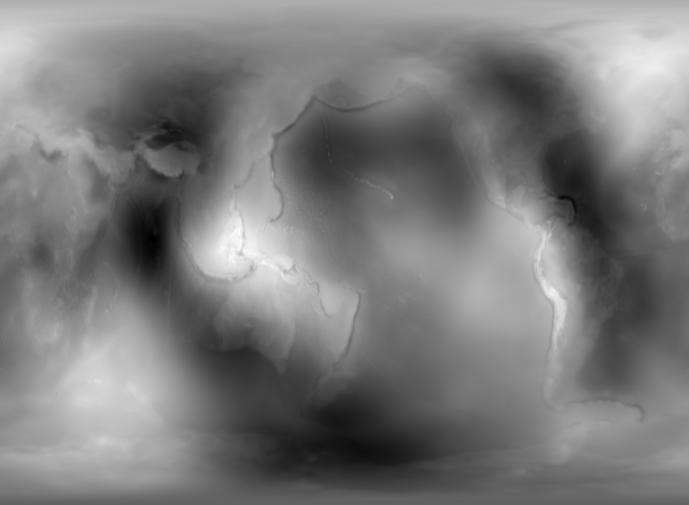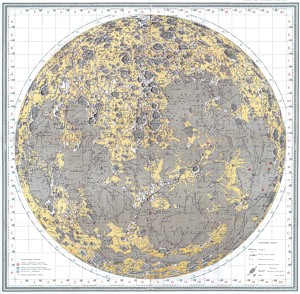About modern methods of near-earth astronomy
Entry lyrical
If the ancient man had got into our time and looked at the night sky, he would probably have started immediately to pray to his gods, or maybe he thought that the day of judgment had come. For us, people whose sky is hidden behind the light pollution of cities and villages, this statement may seem absurd: "Stars are the same stars that you take from them?". But if you look, it will make sense.

Come out in the evening on nature and look into the sky. See nothing? Watch more carefully! At almost any moment, 2-3 bright points will fly across the sky, and if you look closely, you can find more from the heels of the slower and dimmer ones. Sometimes (3-4 times per night) you may be lucky and you will see the brightest flash in the sky, only the moon compares with it in brightness. All this is the achievement of human progress - satellites. For the ancient man, for whom the sky was a symbol of constancy, which he sees above himself from night to night, all this meltseness would be perceived as something unnatural.
Pragmatic Entry
Habrouser - he is not an antique man and most of the stars do not understand. And even if he uses special software and literature , then he will need to learn to understand at the level of the ancients more than one week of sticking into the sky and bristling up ancient legends. But, Habrouseur, he is a modern, technically savvy person and most of them are science-savvy. And this means that among the ancients he would have been known as a wise man — a soothsayer who can predict the appearance of these newfangled flying stars. If you knew how to do it. But I will tell you exactly how this is done today.
')
Introduction
All I'll write here is quite well-known algorithms, many of which are used in other problems. Most astronomers are somehow familiar with them, and the most advanced ones even know how to use them. For these people, the ilk they will read this opus, I will make a reservation right away: among the multitude of all algorithms, I choose the ones that in my opinion are the simplest and most interesting. If you suggest rewriting one of the parts more simply / interestingly, I will gladly post your version. Also, at once I will make a reservation that everything that is located here belongs specifically to the “Scientific Popular”, I will not go into the depths of matane. For those who are not interested in the popular science part, you can go straight to the ending, there is a list of programs with which you can play.
The task of predicting satellite trajectories appeared a long time ago, with the launch of the first satellite. But in those days it was impossible to accurately predict the factors affecting the flight, so the prediction was rough. But over time, this science has developed and was able to create systems such as GPS, which position you to within a few meters.
I did not see other popular science articles on the subject anywhere else in Habré. Although specialized information is complete. And since the computer was laying blanks for one training manual, I decided to simplify the information available there, structure it and put it here.
The basics
Surely, back in school, they told you that the bodies attract each other with force:

Where m 1 , m 2 are the masses of bodies, and r is the distance between them. I will disappoint you. In reality, this is usually not enough. Of course, every atom that is in the first body attracts every atom of the second body according to this formula. The result of these forces is not necessarily deducted by this formula. The bodies can have different densities, and their shape may differ from the ideal sphere. The formula is valid only if the bodies are separated from each other at a distance of r >> l, where l is the linear dimensions of the bodies. If the distance to the body is comparable to its size, this method cannot be used for accurate calculations: the surface of the Earth’s free acceleration g is not constant and changes by a few percent. This problem is avoided in several ways, which are reduced to approximating the distribution of the Earth’s mass by the model.
Earth Models

Here I will talk about the two most classic models. The first is to set the Earth as a sum of point masses, positive or negative, distributed over the surface. Usually this model is used to build the trajectory of the launching missiles, since the model gives good accuracy in the vicinity of the Earth. At high altitude, this method can provide sufficient accuracy with a large number of calculations, which is considered unacceptable.
The second method is a little more complicated mathematically, but it gives good results on the whole space of heights, except for the lowest ones. It is based on matane, which is called " spherical functions ", but in fact has a simple explanation. Suppose we have a function of the gravitational potential at each point in space:

Where ρ is the distance from the point of the Earth to the point we need, and P is the point of interest. This is a three-dimensional function of the gravity of the Earth. In the first approximation, it is constant in time in latitude and longitude. It would be ideal to calculate this function once exactly and use it in the future without calculating it each time. But how to set such a function? Not an array of values! And this is exactly where matan comes to the rescue: why not bring the potential function closer by some set of functions, some decomposition? And (lo and behold!) Such a class of functions in matane exists and is called spherical functions. Roughly speaking, this is an analogue of the Fourier expansion for spherical coordinates. Spherical functions are orthogonal with each other and their space is complete. For lovers of matan, the formula of gravitational potential through spherical functions:

where ϕ is the latitude of a point, λ is its longitude, a is the radius of the Earth, P m n (x) is the associated Legendre function, which is defined using the Legendre polynomial as follows:

To calculate the gravitational potential at any point in space, it is enough to know the coefficients S and C. There are many works on their definition and there are many models on the Internet.
If you count this potential on a sphere of constant radius and expand the sphere into an image, then you will get something like this:

This image is for 96 Earth potential harmonics. The image shows the outlines of the continents and the Mariana Trench. Funny fact: when building models of harmonics of the Earth potential, the data on gravitational exploration of the Earth is often not used, but the analysis of satellite trajectories takes place. Therefore, the above image can be called a "photograph" of the Earth in the gravitational range. I put this picture on one of my colleagues, who were having fun with this model, but in the internet it is full of other, sometimes even more complete images .
Heavenly bodies
The second most important factor in building a model of satellite motion is the moon. And no wonder, it is enough to see how high and low tides it causes. But, if you roughly calculate the acceleration of the satellite’s fall to the Moon, you will only get a = 3.3 10 -6 . If this acceleration would act on a 100 kilogram satellite, it would be able to lift only a small weight in a third of a gram on the ground. And, despite the fact that the force is so small, in just one day the forecast of the trajectory of the satellite that does not take into account the Moon will deceive a ∙ t 2/2 ≈ 100km.
Both the Sun and Jupiter are used in good forecasts, but their effects are much smaller than those of the Moon.
sunny wind

The term "solar wind" refers to everything that radiates our favorite sun. These are various atomic and subatomic particles and electrons and photons. On average, at the distance at which the Earth is from the Sun, the pressure of the solar wind is 9 ∙ 10-6 N / m2. This means that a satellite with a mass of 100 kilograms and an area of three square meters per day will take about a kilometer from the estimated orbit. In principle, for real satellites this value may be greater, since the solar wind can change the inclination of the orbit.
These parameters are average parameters. During solar flares, the flow of solar wind can change several times. Also, it does not take into account the fact that the closer to the surface of the earth we approach, the greater part of the solar wind is blocked by the magnetic field and the atmosphere of the Earth.
In the catalogs, usually for each satellite, the effective area is specified, which can be used to calculate the pressure force of the solar wind, or a formula is given from which this coefficient can be derived.
Atmosphere
The lower the satellite flies, the more it affects the atmosphere. Unlike gravitational and solar wind forces, this force is dissipative and leads to the fact that the satellite loses energy over time. Prolonged exposure to this force causes the satellite to go. The formula for the force with which the atmosphere acts is obvious:
 . In the formula, p is the density of the atmosphere, s is the aerodynamic coefficient of the satellite, and v is the velocity and its modulus. The aerodynamic coefficient of the satellite reflects the efficiency with which the satellite slows down about the atmosphere. It is proportional to the area and inversely proportional to the mass. Usually it is given in the satellite catalogs.
. In the formula, p is the density of the atmosphere, s is the aerodynamic coefficient of the satellite, and v is the velocity and its modulus. The aerodynamic coefficient of the satellite reflects the efficiency with which the satellite slows down about the atmosphere. It is proportional to the area and inversely proportional to the mass. Usually it is given in the satellite catalogs.In short, this exhausts the main forces affecting the satellites. Of course, there are many smaller forces and features of the described forces. But their value is not great. It worries only people directly involved in specific applications.
And now let's move on to how to glue it all together and predict it. The simplest is the integral method. He is certainly the most accurate, most reliable and most ... Slow. This method is simple to disgrace. At each point, depending on the accuracy that we need, the acting forces are considered to be the nth derivative, we add them and approximate them to the next point. Depending on n, the method will be called the nth order method of accuracy. The most classic is the Runge-Kutta method ; it is a 4th order method.
The second method is magical. From the laws of Keppler it is known: the planets move in ellipses. Apply this to satellites. But we note the following: any of the described effects does something with an ellipse that the satellite moves through. It either demolishes it, or deploys it, or reduces it. And this means that by means of magic and adjustable coefficients, it is possible to transform ellipses in time. This method depending on the accuracy and scope of work is called SGP, SGP4, SDP4, SGP8, SDP8. It is because of its speed and simplicity that it has gained immense popularity in amateur astronomy, although it is not applicable for accurate predictions.
What of all this to get and how to play with it?
You can play around simply: use programs that predict the trajectory of the satellite. And at night you can watch them. Strictly at a specified time and place. You can do this as follows.
First of all, there are some great sites.
www.heavens-above.com - on this site you set your coordinates, after which you can immediately see all satellites of interest: when they fly over you, what is their magnitude (for a human eye, usually, a magnitude lower than third is seen).
Also on the site you can get a complete list of "Iridium Flares", about which it was said at the beginning.
www.calsky.com is a less convenient site than the past, but on it you can see the “transits” of satellites through the Sun and the Moon. "Transit" is a passage in the background. For example:
Also, if you want a forecast where there is no Internet, there are a couple of offline programs. The most understandable and intuitive - Stalarium . He immediately draws a satellite in the sky and show the stars. You can also take advantage of specialized programs of this or this .
Well, for those who like to experience everything for themselves or suffer, there is an open source that can predict. For the analytical algorithm, the code is available here . Immediately in many languages and in many variants. For the integral forecast, I haven’t found the open code, but I don’t want to give mine) If I see it, I'll drop the link here.
Source: https://habr.com/ru/post/126710/
All Articles
